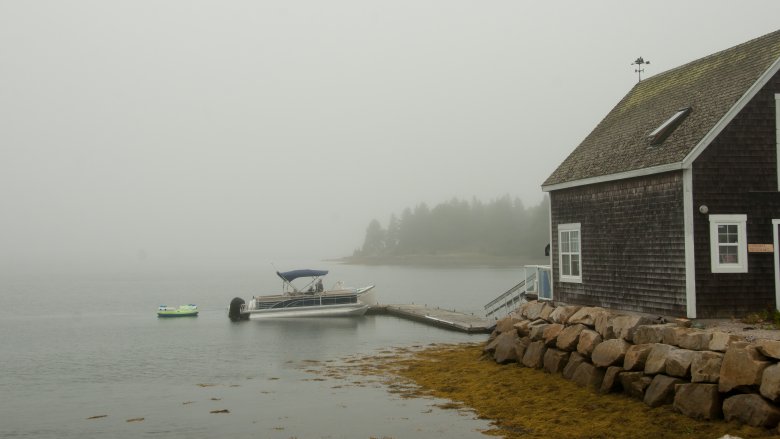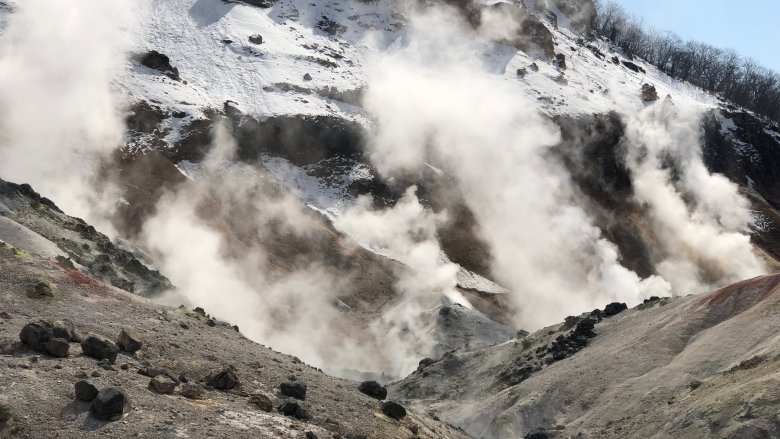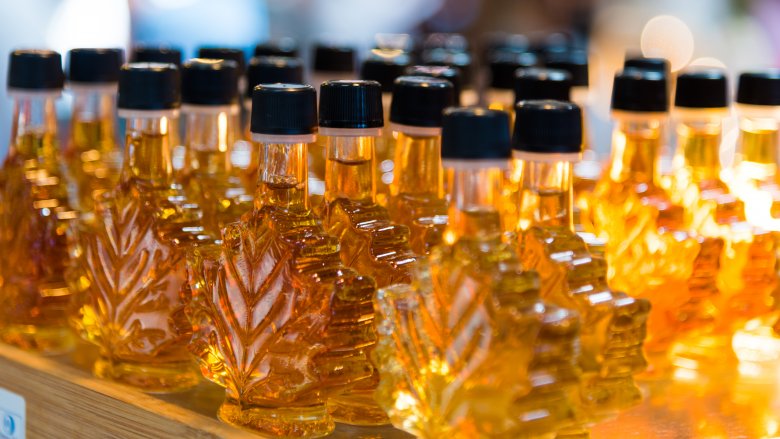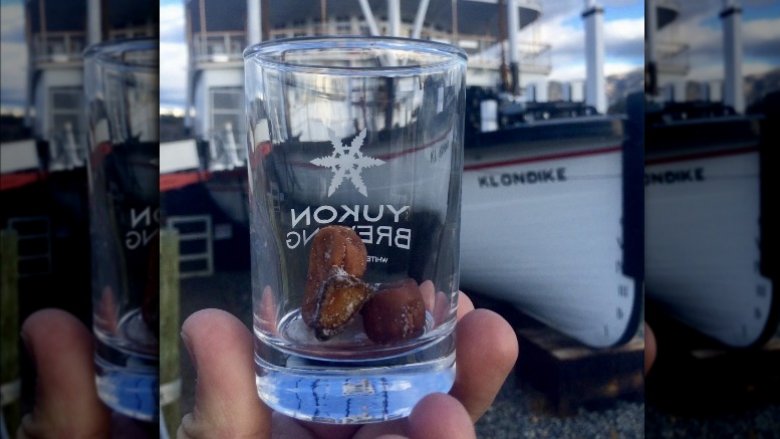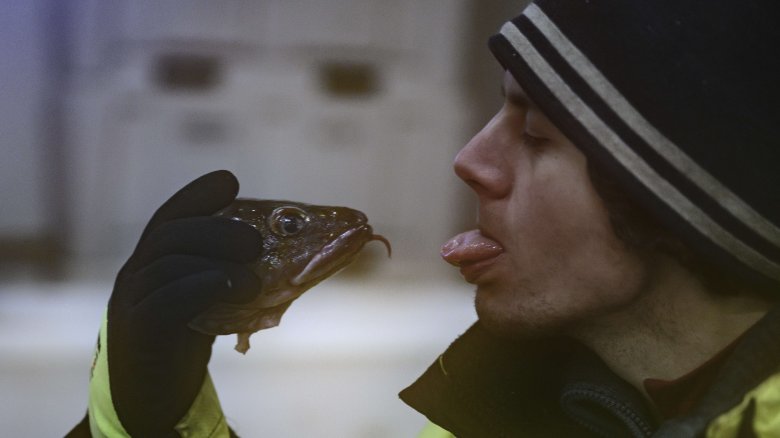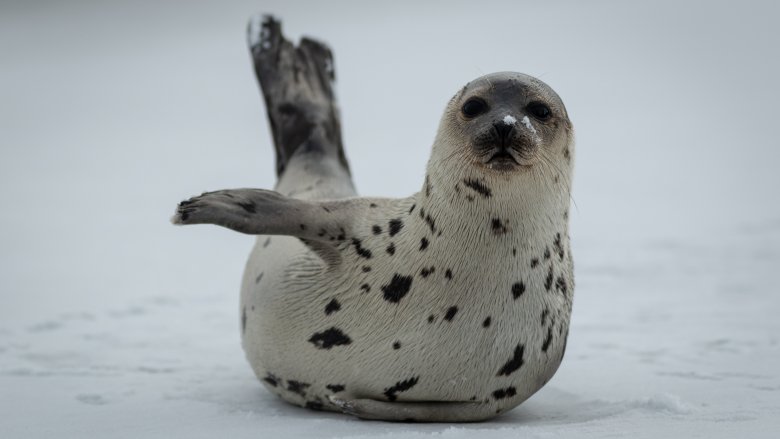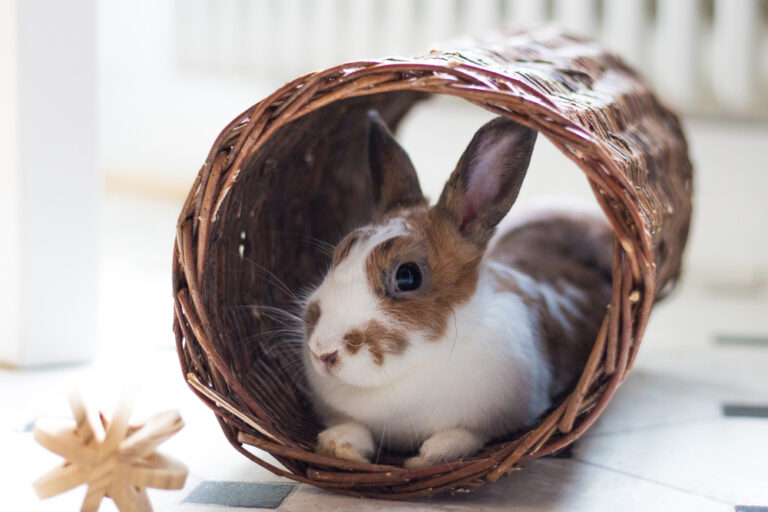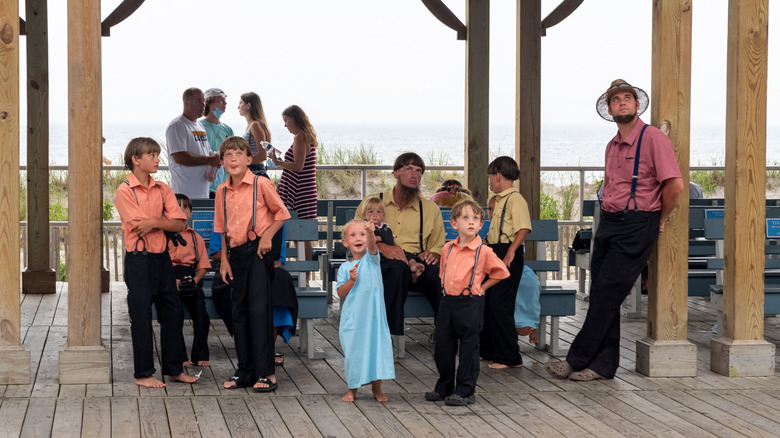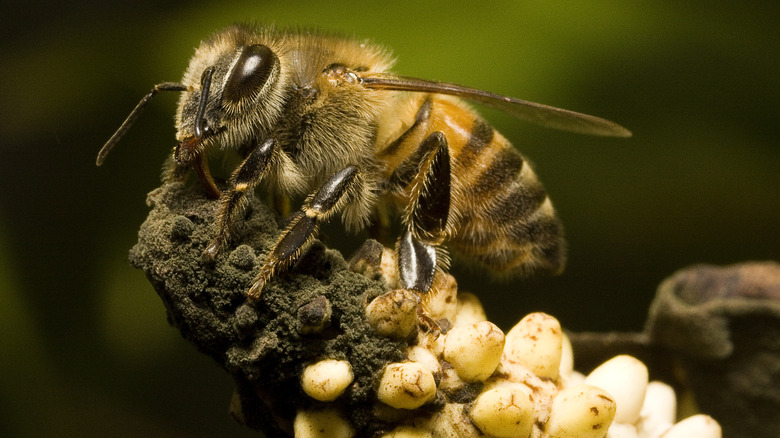
Bizarre Things That Only Exist In Canada
Maple, moose, bacon and goose, frozen boots, excessive thank you’s – this is what you’ll find in the land of Canada, where warm people live lives shaped by a cold, harsh climate. Second only to Russia in size, Canada follows the way of poutine more so than Putin. Its foods are hearty, its medical care free, and its favorite sports invariably involve ice and things that slide on top of ice. Yet for all its geographical size, the country’s population is smaller than that of California, and 80 percent of citizens cozy up against the US border for warmth.
While Canadians aren’t that different from their southern neighbors, growing up in the Great White North is an undeniably singular experience. It’s entirely possible that in Canada you could find yourself apologizing for disturbing a massive snake mating-fest, apologizing for beating someone at curling while stoned, or apologizing for accidentally swallowing a frostbitten toe. Bizarre, eh? Read on.
Bizarre beavers do it dam big in Canada
Leave it to Canadian beavers to emasculate the United States in the goofiest of ways. The world’s biggest beaver dam exists in Canada, and the Telegraph places its size around 2,790 feet — twice the length of the Hoover Dam. Located on the south side of Wood Buffalo National Park in Northern Alberta, biologists believe the dam to be the work of several beaver families felling thousands of trees over the span of multiple generations – a dam dynasty.
The dam (the beaver one, not the Hoover one) is so darn big that it can be seen from space, which is actually how it was found by researcher Jean Thie in 2007 via satellite imagery, according to the Guinness World Record organization. From there, it took another three years for rangers from Parks Canada to confirm its existence with a helicopter fly-by in 2010. At that point, the world was safe from ever running out of dad-joke material again.
So why’d it take so long to find? Because Wood Buffalo National Park is in the middle of nowhere, around 50 miles from the nearest sign of human life. Another four years would pass until adventurer Rob Mark would make the forbidding 120-mile trek through rough terrain, bad weather and giant mosquitoes to lay his eyes on the thing. Upon doing so, he said, “Dam.”
Canada's Oak Island okey-doke
Oak Island’s mystique existed long before History’s Curse of Oak Island TV show. Treasure hunters have been obsessively plumbing the depths of this notoriously uncooperative land since the 18th century, often ending in disaster.
Reader’s Digest says that for centuries, stories have circulated claiming the island holds artifacts ranging from the Holy Grail and the Ark of the Covenant to Shakespearean manuscripts and Marie Antoinette’s jewels. The original tale holds that the famed pirate Captain Kidd hid his treasure there, while other theories place Oak Island and its famed Money Pit as the home of Masonic riches, or claim that it holds British spoils from the invasion of Cuba during the Seven Years’ War worth around $180 million today. Most time and money spent over the past couple centuries has been devoted to excavating “the Money Pit,” a deep pit which continuously floods, making excavation quite the costly chore. Everyone from FDR to John Wayne have been convinced there’s great treasure down there. For all the hubbub, what have they found? Oak. Stone. Coconut fibers. Yet the search continues.
It’s easy to scoff at first glance, but the more you look into Oak Island, the more compelling it becomes. Adding to its undeniable allure is the “curse,” which claims seven men will die searching for the treasure before it’s found. To date, six men have died, with the sixth death occurring in July of 2019, according to News Observer. One more to go.
The Canadian hills with a smoking problem
Like an estranged stepfather, these Stygian mounds smoke incessantly and remain far removed from society. However, the Canadian Weather Network says their smoking comes as a result of carbon and sulfur-rich rock meeting oxygen rather than from a troubled past. The hills are located in a remote region of the Arctic north, with the nearest village more than 60 miles away. Despite the distance, the village is known as Paulatuk, meaning “place of coal” in the native Inuvialuktun language.
While the hills generally only have eyes for smoking and turning the surrounding landscape into an acidified Martian grotto, they have managed to find their way into history. They first became known to Europeans around 1850 via arctic explorers who were searching for the ill-fated Franklin expedition, which had gone missing five years earlier. From a distance, the explorers may have mistaken the billowing columns of smoke from the hills to be signs of human life. Imagine their delight to have found a blood red, spontaneously combusting wall of doom located in some of the coldest and most inhospitable territory in the world.
After attempting to show the hills some TRUTH ads and Juuls, the CBC says explorers brought back a piece of rock to ship captain Robert McClure’s quarters which ended up burning a hole through his mahogany desk. Not ominous in the slightest.
Canada's slither-in snake sextravaganza
Each year over 75,000 serpentine denizens gather in a den of sin the size of a living room for the chance to get freaky, comprising what the New York Times says is the largest concentration of red-sided garter snakes in the world.
After keeping their cool in subterranean limestone caverns all winter, things heat up into a hissy fit of ecstasy. Heeding Kid Rock’s iconic decree, the snakes “get in the pit and try to love someone.” Visitors to the pits can witness “mating balls,” in which writhing masses of male snakes vie for the chance to affix the belle of the ball with their pungent “gelatinous copulatory plugs,” according to Oregon State researchers. Yes, it’s as weird as it sounds, but it serves a practical purpose, letting all the boys know who the snake-daddy is.
Unfortunately for males, the “hiss” to “hers” proportions are depressingly similar to that of a Kid Rock concert. At times there may be up to 10,000 males to every one female. Yet, their snake eyes still light up at the chance, sensually segueing straight from their eight-month hibernation to the raucous mating romp. When all the plugs have been affixed, the snakes shimmy on down to the nearby marshes, where they live and feed for a few months before shedding their summer skin and looking forward to next year.
A habitat for one percent of humanity
Habitat 67 looks like dormitory housing for man-eating wasps. Despite its regurgitated wood-paste aesthetic, this cube-like, minimalist monolith was built for people and is considered an architectural marvel, with Architectural Digest citing its “trailblazing design.” Built for the 1967 Montreal World Exposition as an affordable living concept, it is the brainchild of architect Moshe Safdie, who initially designed the complex as his thesis project for the architecture program at McGill University using Legos, according to The Star.
Constructing the prefabricated steel and concrete modules ultimately proved to be way too expensive, costing altogether what would now be around $100 million. Despite being considered a failure for its cost, Habitat still made quite an impression, garnering worldwide acclaim for its ability to incorporate gardens, privacy and open space into its multi-tiered design. It remains a highly desirable piece of real estate, with the original 354 modules now comprising 148 residences for Canada’s gentry.
Perhaps the oddest part of Habitat 67’s complex legacy is its popularity as a surfing destination. The New York Times says it’s home to a standing wave, a gnarly byproduct of its construction on the banks of the Saint Lawrence river. Capable of reaching more than six feet in height, the wave draws thousands of surfers and kayakers each year, with multiple “river surfing” schools in operation nearby.
Rolling stones while stoned
If you’re at all familiar with Wiarton, Ontario, it’s probably because of Wiarton Willy, the town’s resident groundhog and meteorologic seer. But Willy isn’t the wonkiest thing going on in Wiarton. It’s also home to Bongspiel, the world’s only cannabis-themed curling tournament, according to the London Free Press. The tournament name is a play on the word “bonspiel,” which literally means “curling tournament.” It’s a highly clever play on words, but not surprising in a weed-legal country that holds twice as many Olympic curling golds as any other.
To participate in Bongspiel, The Post says you’ll need to put together a team and give it a clever name like “The Rolling Stoners,” “Stoned Cold Rocks,” or “3 Buds and a Spud.” Then you’ll need to pay the $200 registration fee and be ready to roll by 9 AM at the Wiarton & District Curling Club, run by intensely Canadian president Gord Ironmonger, the chief of the joint who keeps things on the up and up. Live music, munchies and bongs for the winners are included in the fee.
You’re not legally allowed to toke inside recreation centers, so be prepared to brave the cold outside in the smoking tent. The bar opens at 11 AM, so you can grab some Canadian whiskey to warm up. And if you win? You’ll get your name on the trophy plaque reading “One good stone deserves another.”
Meet your Canadian maple syrup maker
In South America, there was Pablo Escobar. In the USA, there was Al Capone. In Canada? The maple syrup cartel. Funny as it sounds, the Federation of Quebec Maple Syrup Producers is real, and has been described as “the OPEC of maple syrup.” These maple makers produce over 70 percent of the world’s supply and maintain a maple syrup reserve The Globe and Mail says is valued around $240 million.
Unfortunately, the Financial Post says the cartel isn’t nearly as sweet as its product, leveraging its position to strong arm independent syrup producers into paying increasingly expensive levees, and sometimes searching sugar shacks, impounding syrup, and threatening seizure of property. If all else fails the cartel goes to court, where its deep pockets make it easy to force the hand of independent producers.
The cartel rarely loses, but when it does, it loses big. In the summer of 2012, it was discovered that almost 10,000 barrels had been stolen from one of the maple syrup reserve facilities. For comparison, Vanity Fair says each barrel of syrup was worth around 26 times a barrel of oil at the time, meaning the cartel had been robbed of more than $13 million. The event came to be known as The Great Canadian Maple Syrup Heist, the sweetest, costliest heist in Canadian history.
The Canadian cocktail with a toe in tow
Toeing the line between funny and creepy, the Sourdough Saloon offers you the exciting chance to suck down a cocktail garnished with a dehydrated human toe. The Sourtoe Cocktail, as its known, has been getting people “toe up from the floor up” since 1973, according to Dawson City’s website.
Legend says rum-running brothers Louie and Otto Linken got caught in a blizzard in the 1920s, and Louie ended up with a frozen foot. Otto did the brotherly thing and chopped off Louie’s blackened toe with his ax, placing it in a jar of rum for preservation, where it remained for 50 years. Captain Dick Stevenson was the lucky toe-finder, stumbling upon it in a remote Yukon cabin. After conferring with friends, he decided it should be a drink garnish and the key to membership in the Sourtoe Cocktail Club. The Canadian Broadcasting Corporation says rules for membership can be boiled down to a single-digit: “You can drink it fast. You can drink it slow. But your lips must touch that gnarly toe.”
Over the years thousands of pairs of lips have brushed toe, but the original extremity is long gone. NPR says the first toe was accidentally swallowed around 1980, and various mishaps including theft now have the number of toes used over the years in double digits. Make sure you go between 9 and 11 PM, when it’s “toe time,” and to truly do it right, order it with Yukon Jack.
Screech-er feature
Anyone who’s seen Saved by the Bell has been “Screeched-out” for decades, but in Newfoundland people have been getting “Screeched-in” for far longer. Screech-ins are a tradition where non-natives can become honorary Newfoundlanders by kissing a codfish and downing a shot of high-powered rum. The initiation process traces its roots back to when Newfoundlanders would trade salt fish for Jamaican rum, giving each country a taste for their respective imported good. The Boston Globe says kissing the cod represents a farewell to those leaving for Jamaica to return with the goodies.
Obviously, the whole enterprise is rather unofficial, but there are certain Screech-in customs followed in Newfoundland with varying degrees of formality. The official name supposedly came around World War II, when an American soldier emitted a shrill shriek after downing a shot. The CBC says that back in the day, screech was slang for cheap, harsh rum that locals enjoyed giving to “come-from-aways,” or CFAs, to see their reaction. Over time, this morphed into all manner of ceremonies including official certificates printed for those who followed the cod call of duty, bologna ingestion, limerick recitation, and even a Screech brand of rum, imported from Jamaica and bottled in Canada.
Technically, Screech-ins can occur anywhere and with any beverage, but the most authentic Screech-ins are executed by Newfies in their homeland with pithy couplets, circular meat, and stinky cod in-tow.
Baking the seal
Seal meat consumption is not unique to Canada, but only in Newfoundland and Labrador will you find locals getting misty-eyed about “flipper pie,” a traditional meal cooked and consumed around April and May during the annual seal hunting season. Thanks to a mid-16th century decree from the Catholic Church, it’s also considered “fish,” and is therefore allowed to be eaten during Lent, according to the Smithsonian Magazine.
Back in the day, natives and arctic explorers would rely on seal meat to stave off scurvy. Every part of the animal would be used, with furs used for clothing and fat used for oil lamps. If you decided to make the dish you would buy flippers straight off seal hunters’ boats. These days you can just get them from the grocery store, packaged in the same mildly unsavory foam and plastic containers that hold the surf and turf we usually consume.
The flavor of flipper pie is kind of like chicken pot pie, but the meat supposedly tastes more like rabbit, very tough and gamey. To make the pie, flippers are coated in flour and pan-fried to seal in flavor, then roasted with pork fat, root veggies, and a thick, gravy-like sauce inside a pastry crust, as seen in this CBC documentary. When it’s done cooking, many recipes call for it to be served with a side of Worcestershire sauce.
Canada's 80 proof of ownership
Canada and Denmark have been warring for almost a century. The stakes? According to the CBC: bragging rights to Hans Island, an uninhabitable half square-mile piece of rock with no natural resources smack dab in between Canada and Greenland, which is an autonomous Danish territory. The casualties? A few bottles of whiskey and schnapps.
International law dictates that countries have the right to claim any territory within 12 miles of their shores, which means both countries have a claim to the desolate rock. As described by Business Insider, in 1933 the League of Nations’ Permanent Court of International Justice decided that Hans was property of Denmark, but the League was not so permanent, dissolving a few years later along with the Danish claim. Both countries would agree to disagree until 1984, when a Danish official raised his country’s flag on the island and left a bottle of schnapps at its base with a note reading “Welcome to the Danish island.” The two countries have gone back and forth ever since. As told by author Michael Byers, when Canadian officials visit, they leave a bottle of Canadian Club whiskey and a sign reading “Welcome to Canada.”
Despite having formed a joint task force to solve the issue in 2018, the countries still haven’t come to a resolution. With free booze on the line, who can blame them?
A sorry act
It’s no secret that times are changing, and with societal change comes legislative change. One such example is an increasingly popular piece of legislation called an Apology Act. You didn’t know? Sorry for not explaining! An Apology Act ensures that an apology cannot be used as an admission of guilt in court, and in Canada, the Huffington Post says all but two of the country’s provinces and territories have them in effect. You may find these rules in other countries, but nowhere has accepted this legislation like Canada, where apologies are considered a reflex.
In countries like the U.S., litigation is almost a way of life, and U.S. laws are pretty permissive when it comes to lawsuits. Anyone who apologizes is asking for trouble in court, so Americans are encouraged to hold their tongues. In Canada the legal climate is less focused on litigation first and more focused on well-mannered, constructive discourse. Up north, the Apology Act is focused more on protecting the Canadian right to be polite. Weaving this social inclination into Canadian law is a true feather in the cap for one of the country’s more positive stereotypes, namely the inability of its citizens not to apologize. With the legislation in place, Canadians are free to be themselves without the terrifying possibility of offending their fellow citizens.
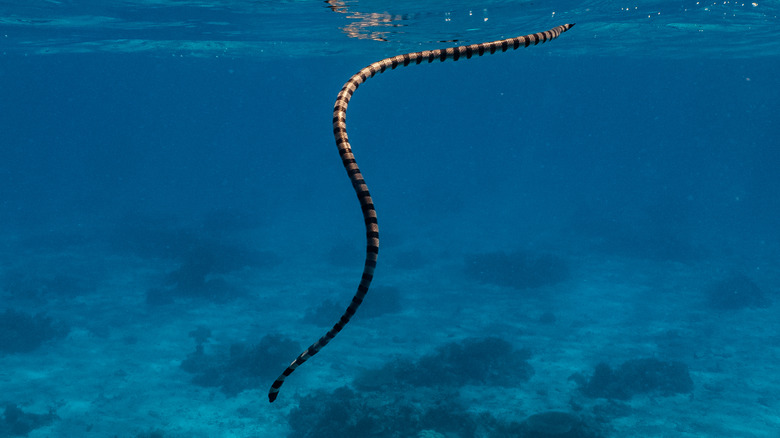
The Truth About The Haunting Belcher's Sea Snake
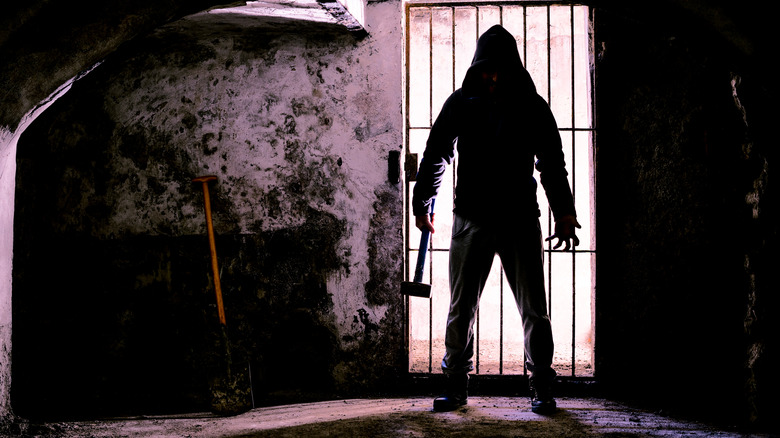
These Were Serial Killer Carl Panzram's Chilling Last Words

The Mysterious Murder Of Dorothy Jane Scott

Strange Food Fads Of The 1950s

The Legend Of Genies Explained

Seeds From Biblical Times Planted To Revive Extinct Species
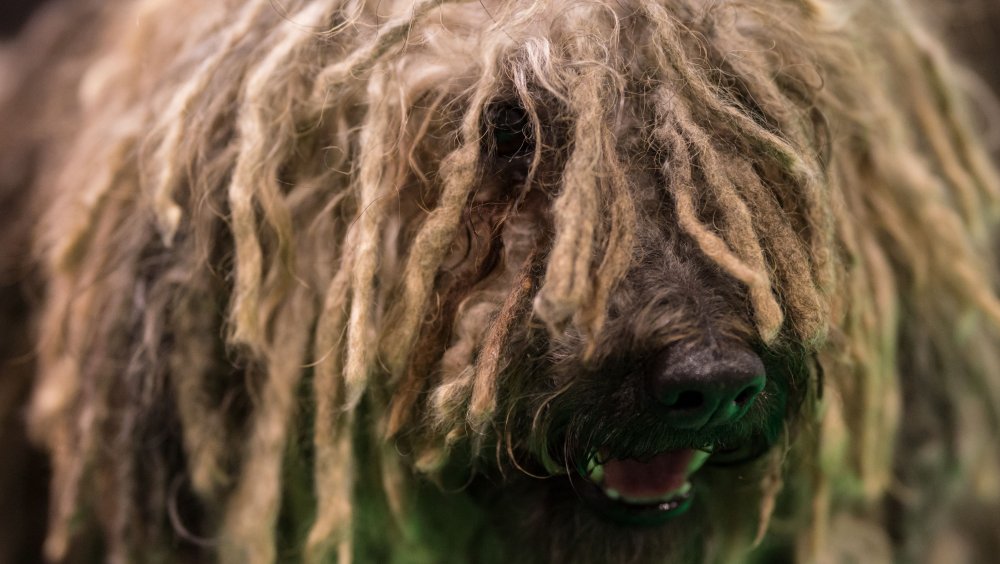
The Weirdest Dog Breed In The World

The Real Reason UPS Trucks Have White Roofs

What Is A Naruto Run And How Is It Linked To Area 51?
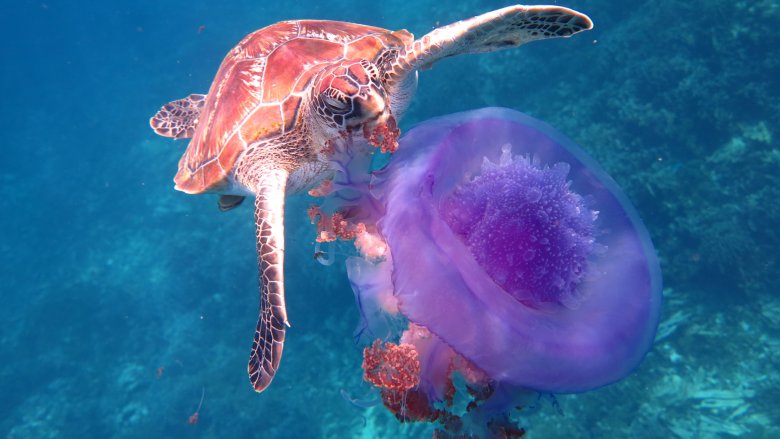
What Animals Eat Jellyfish?

